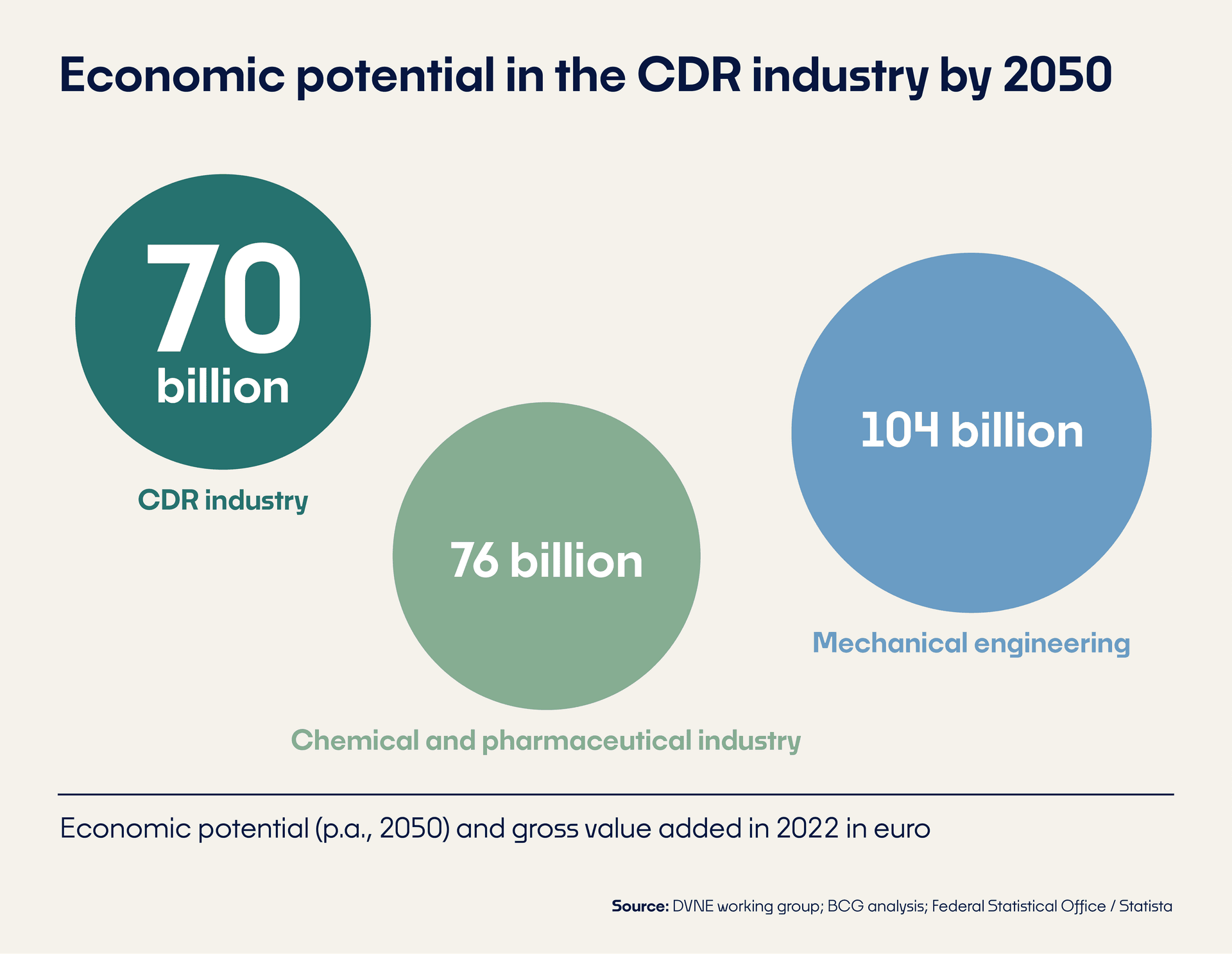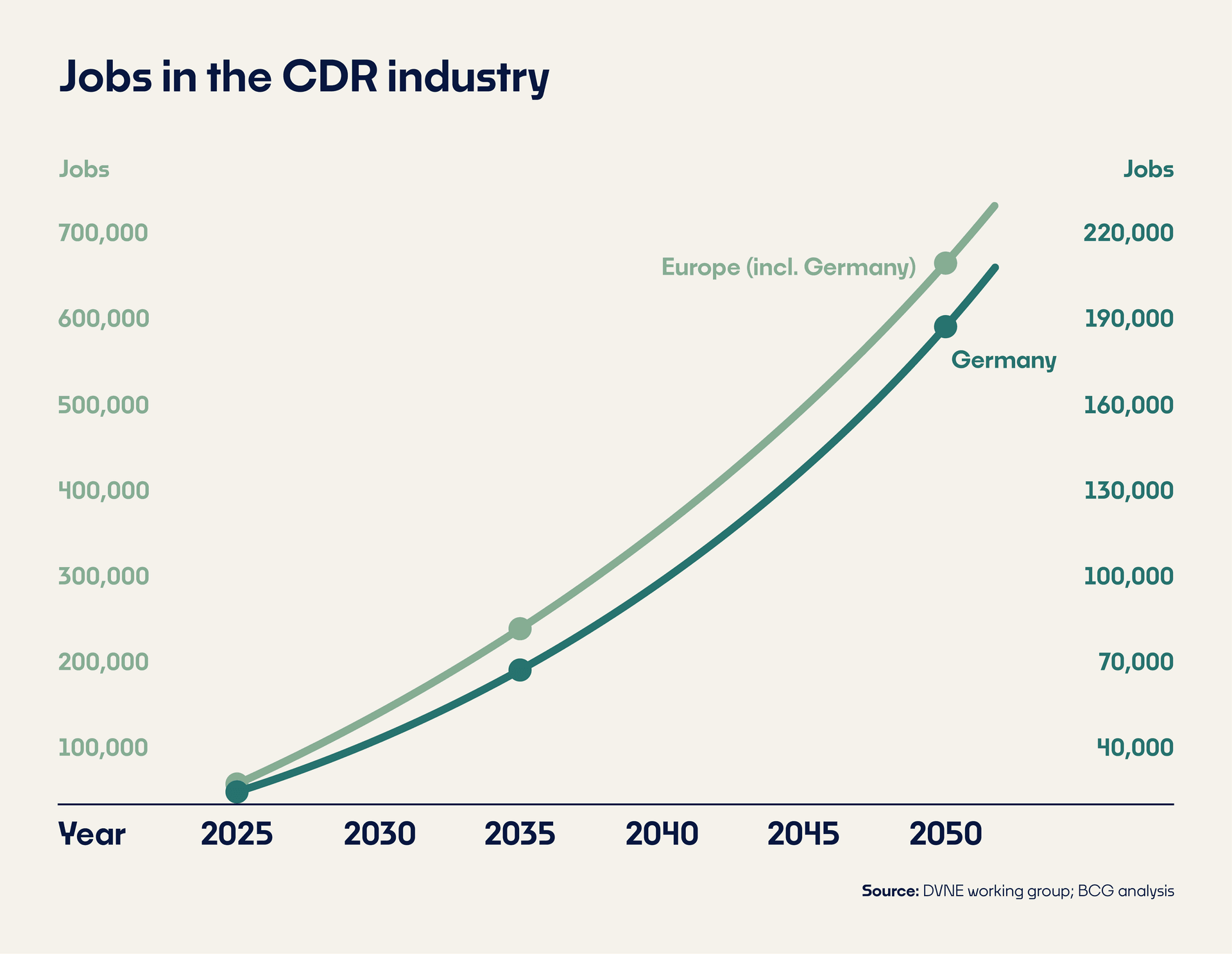Economic driver for GermanyEconomic driver for Germany

The German CDR industry could grow to 70 billion euro per year by 2050 and create up to 190,000 future-proof jobs. For Europe, the economic potential is 220 billion euro and 670,000 new jobs. This is shown by a study conducted by the renowned management consultancy Boston Consulting Group (BCG).
Germany as an ideal location
With a progressive climate policy, Europe and Germany can be catalysts for a thriving CDR industry. Germany in particular has optimal conditions in terms of location with its strengths in mechanical and plant engineering, its start-up ecosystem and its cutting-edge research. The CDR industry has the potential to promote significant economic growth and create many high-quality, future-proof jobs throughout Germany. This growth will benefit various sectors, including mechanical engineering, manufacturing, the energy industry and digital services.
Economic potential
The market for CDR technologies is growing rapidly. While turnover is still low today, the economic potential could reach up to 70 billion euro per year in Germany and 220 billion euro in Europe by 2050. This development illustrates the enormous economic potential of the sector and its importance for the future of industry.

CDR as a driver for jobs
If the right course is set, up to 70,000 new jobs could be created in Germany, and up to 220,000 across Europe, by 2035. With the further spread of CDR technologies, this potential will rise to 190,000 jobs in Germany by 2050. The CDR industry is developing into an important economic factor with numerous new employment opportunities in various sectors.

Information and background knowledge
- BCG Report Negative EmissionsPDF / 13.82 MB12.03.2025Europe and Germany’s Role in Catalyzing a Trillion-Euro IndustryDownload
Climate-neutral GermanyNet zero by 2045: Why carbon dioxide removal is necessary
In order to mitigate the dangers of climate change and secure a liveable future, Germany has set itself the goal of becoming climate neutral by 2045.
